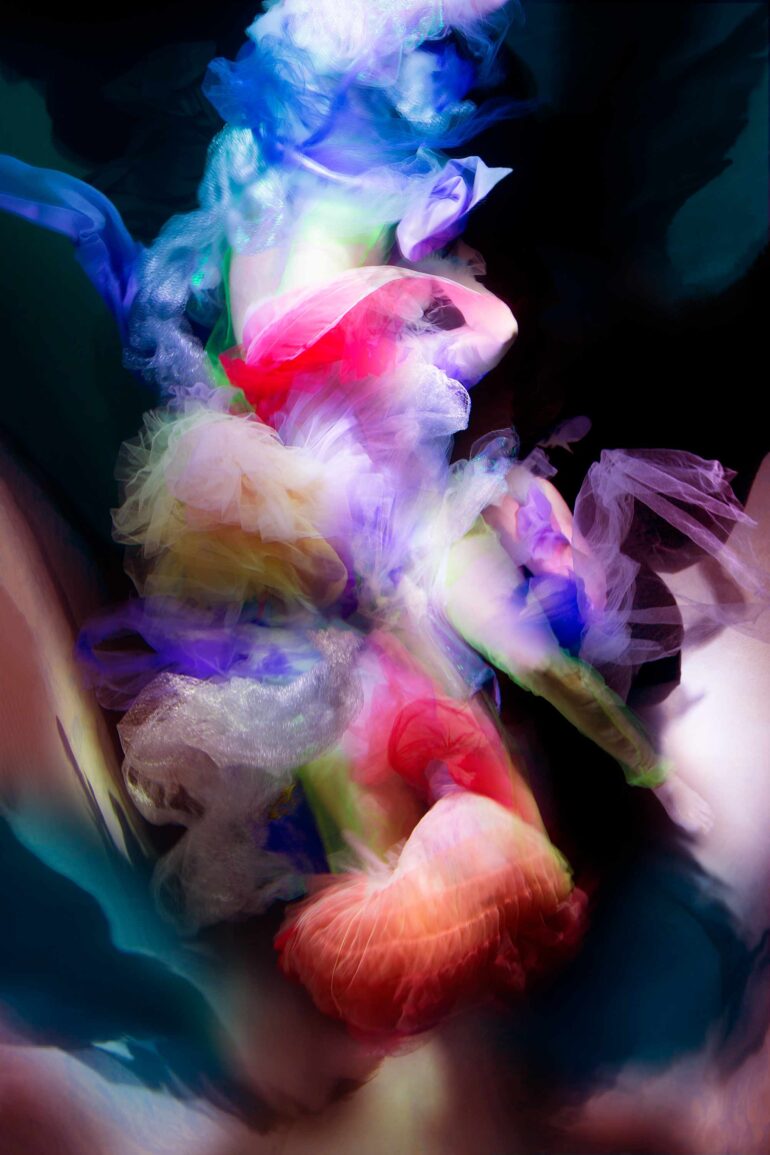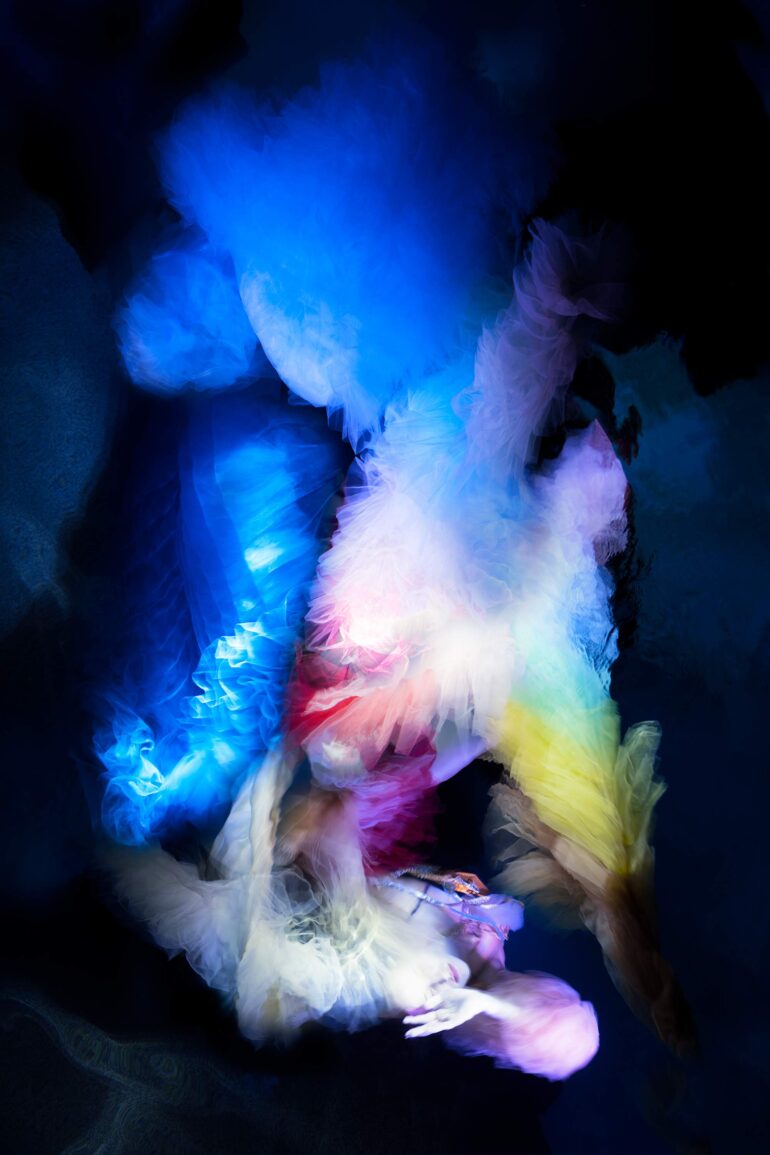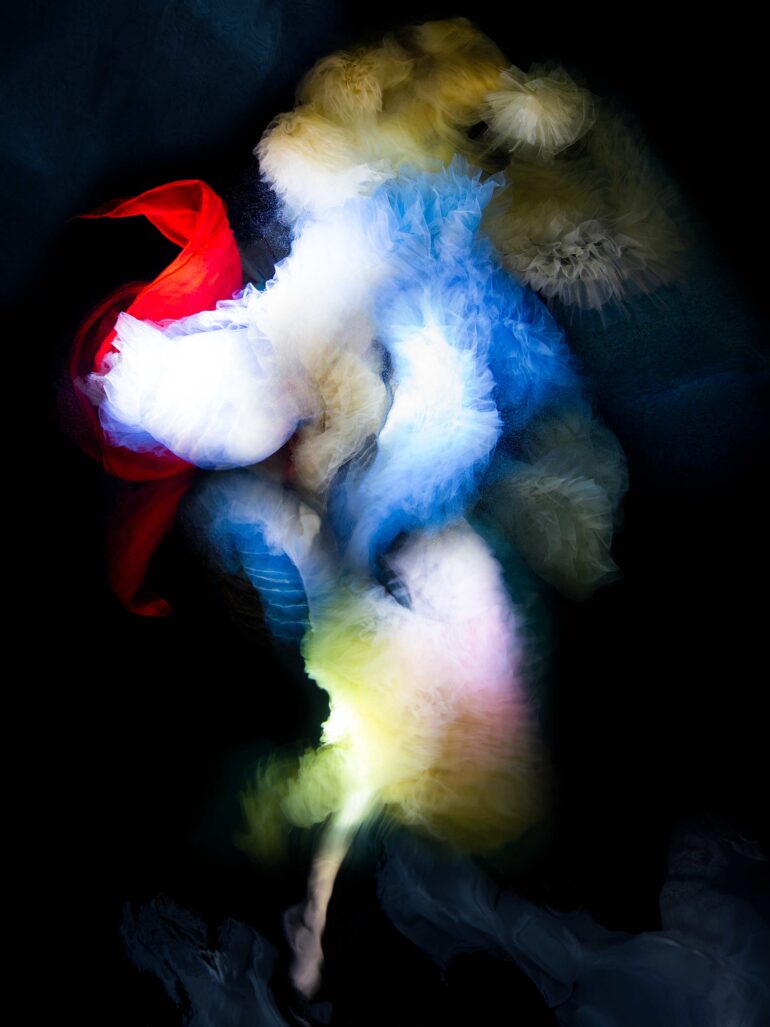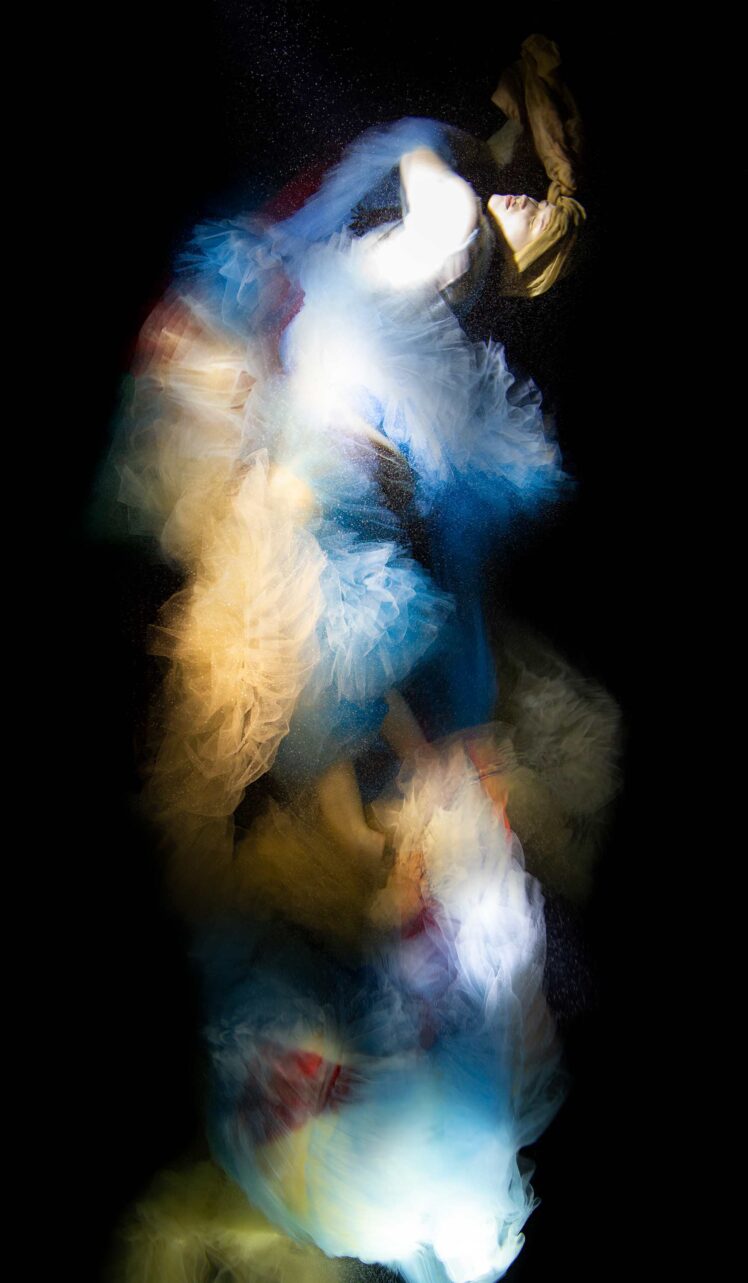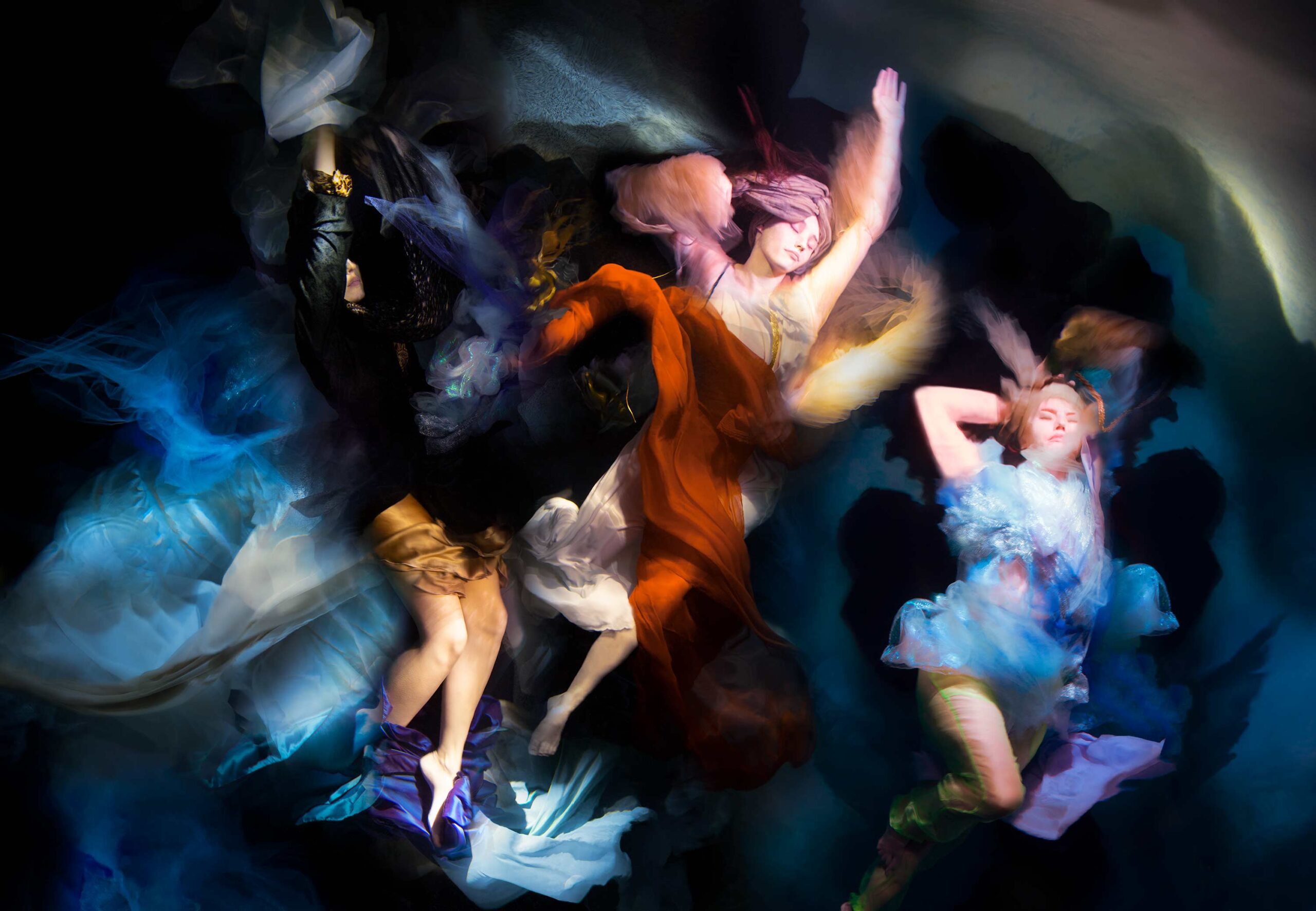Last Updated on 06/24/2023 by Chris Gampat
“Humanity needs to create to feel alive, and so if you give over that expression to AI, then you’ve deprived yourself of that much living,” expresses photographer Christy Lee Rogers to the Phoblographer in an interview when asked about AI imagery. “The narrative in my work is always first about being human, searching for something we all want to find, that we know is there but we can’t seem to know about it because It’s beyond (the) comprehension of the mind. That can give you either freedom or can feel like a trap.” At the same time, she believes that the unknown place is very native to us as human beings. This idea is explored through many of her images, which remind us of Baroque paintings.
All images by Christy Lee Rogers. Used with permission. Please check out her gallery, Website, and Instagram for more.
How Christy Lee Rogers Got into Photography
When Christy Lee Rogers first got into photography, she tells us that the disposable camera was a young deal. This was when he was younger — specifically referencing that she was 16 years old. That’s when she became her high school boyfriend’s muse for photography. “He developed everything himself in the make-shift developing room he created in this tiny bathroom,” she recounts. “As a gift, he gave me my first camera, which was an old Nikon 35mm from a garage sale. That year I enrolled in a photography class in high school, and it was the most invigorating hour of my whole day.” Christy was always into the various arts because she found them a reprieve from the otherwise monotonous and boring days at school.
Image-making overtook Christy when she was young with a power that she hadn’t felt. It was alluring.
“I now know that these art forms saved my life.”
She kept shooting photos and stashed them away — even throwing away the negatives, much to the horror of some of our readers currently eyeing this sentence. Then, she got into underwater photography and experimenting with water. She did everything by eye. She didn’t use light meters, proper lights, etc. Today, she’s known for this style of work after the release of her Siren series in 2008.
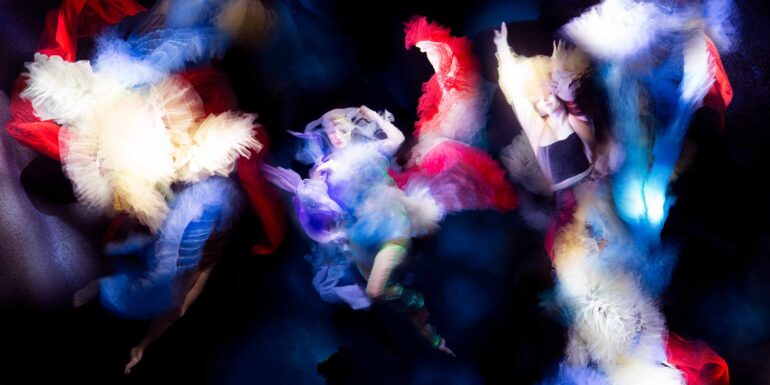
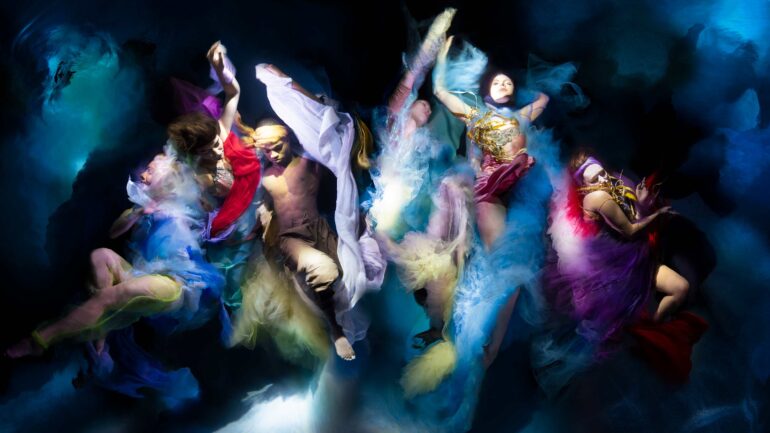
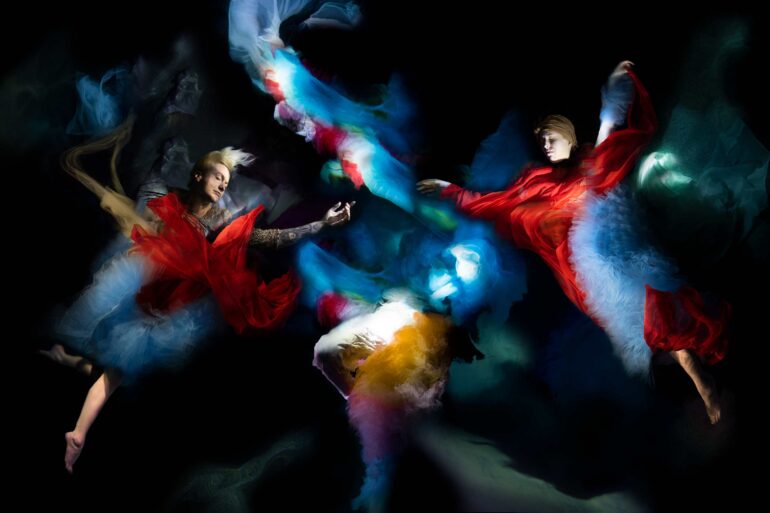
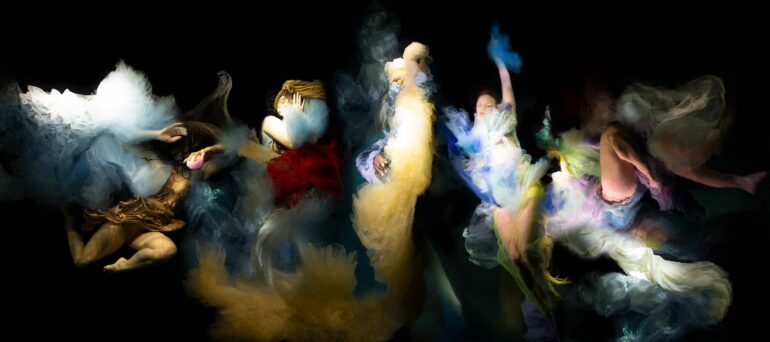
To make these images, Christy Lee uses a Canon 5D MK III and a Fujifilm GFX 100. “In an experimental fashion, lights change for me from shoot to shoot, but my rule is to keep it as simple as possible,” she explains. “Recently, I’ve started using colored lights and underwater flashlights across the surface of the water to accent certain areas or parts of the body. These are my main tools, but I’m open to experimenting.” In fact, experimenting and being open to the unknown is a major part of her creativity.
Some photographers need clear, consistent planning and direction. But Christy Lee needs experimentation in combination with some up-front planning. Like the famous chef Francis Mallmann, she embraces the idea of mystery. “There’s an uneasiness I experience before each shoot because of this unknown; and it keeps me on my toes — keeps me sharp,” she tells us — further emphasizing its necessity. “And it really hurts, but now I’ve grown used to it, so I know that I always make it through. Yes, some of the final photos are serendipity, but I don’t really believe that it was not there to begin with.” Christy says that her and her team needed to cut loose and let go to find those picture-perfect moments. And the up-front planning is key to reaching the final destination.
When you experiment, you have to start by acknowledging that there are things you don’t know. You have to let yourself be vulnerable, while at the same time being sharp and alert. I’ve learned over the years to trust my instincts, to sculpt what I see immediately without too much distraction from my mind. And I’m okay with being wrong about things, as that is inevitably part of the process. You have to make the mistakes first before you can learn. But I would say that when you’re creating from the heart you can’t go wrong; everything is meant to be.
On a Shoot
On shoots, Christy references notebooks that she’s kept throughout the years. They are a treasure trove of ideas, concepts, etc.
“Everything is magical under water, and so I start out knowing that my concepts will be interpreted first by the water,” she explains. “Each collection is an extension of myself, and my need for knowledge about humanity and the universe around us in which we live. There will always be a central concept that I base everything around, and I form this concept from my notebooks.” Christy makes her notebooks sound like Leonardo Da Vinci’s — which were famously very difficult to read so that she protected his ideas. However, we cannot confirm nor deny that she does this. But considering her work, we all have to admit that it’s fun to think about!
Before her shoots, she goes over the process with each model — discussing things like body positioning in the water, lights, etc. She purposely doesn’t explain the details until the day of because then, otherwise, models tend to overthink the process. Christy wants models to use their own imagination and feel the freedom to represent their ideas of the main concept.
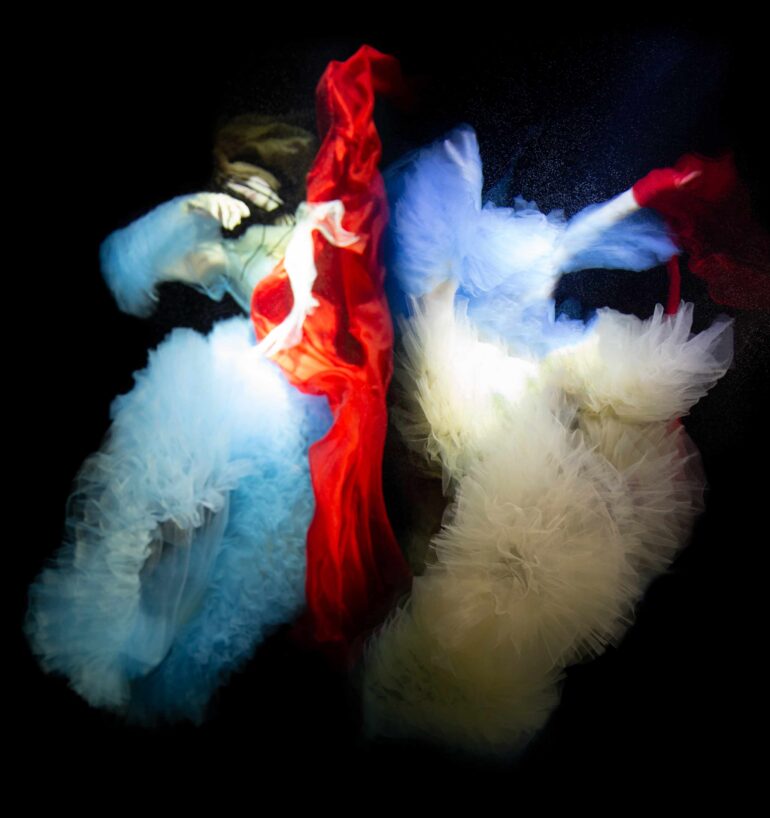
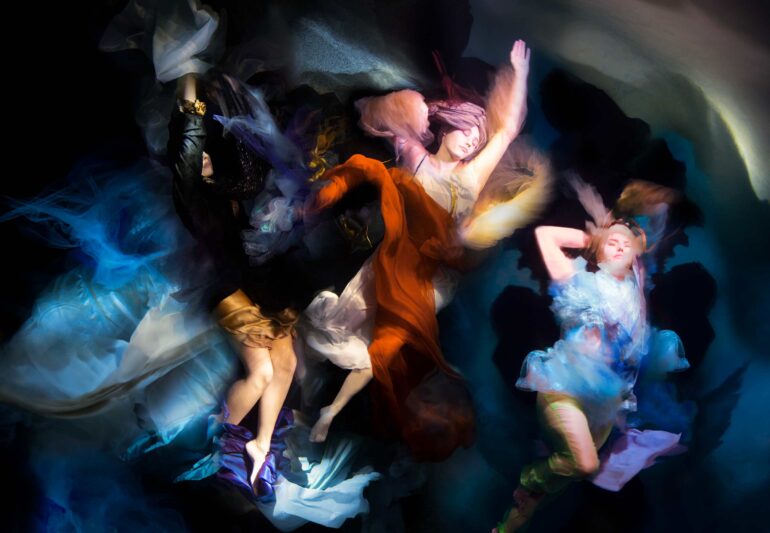
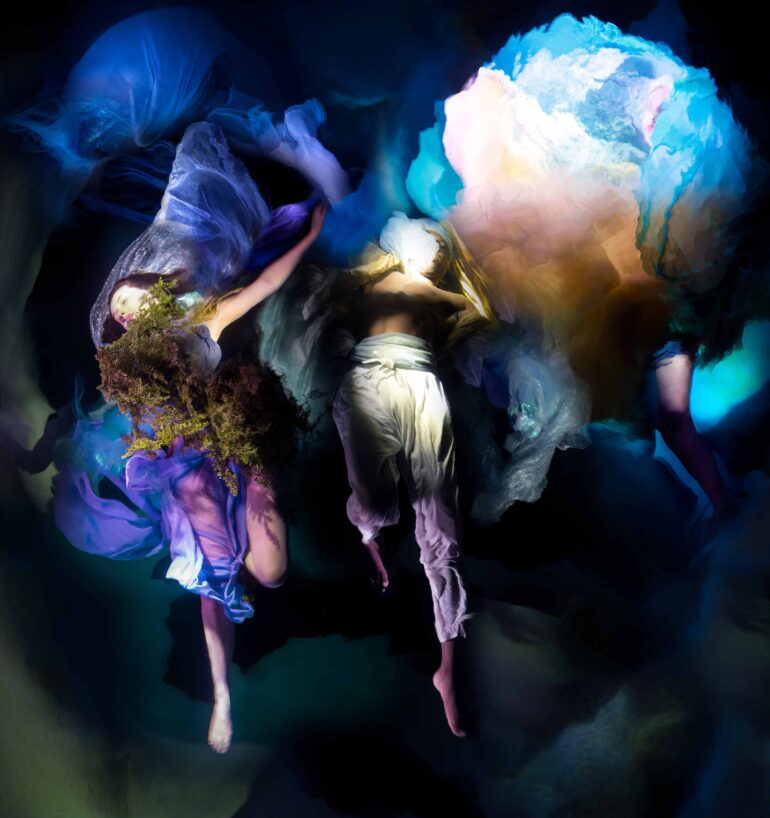
During the shoot, she and her team start to experiment and problem-solve. Each model reacts differently in the water. “I want to make sure that they can overcome these difficulties organically and in a way that’s right for them,” Christy explains to us. “We build on this process as I direct them through the whole thing.”
She continues to state that these are “normal people,” and she teaches them as things progress. Of course, it’s a challenge — and the feeling of being vulnerable is real too. After a while, the shoot organically grows and bears fruit worth picking in the digital darkroom. For Christy, one of her biggest challenges is working through her own anxiety and trying to one-up herself over and over again. Additionally, there’s all the things that happen when in the water. Controlling the elements is tough for her. “Everything I do in the water is very experimental in nature and involves precision in directing the models, light, fabrics, and movement,” she states. “It involves patience and trusting my instincts at every moment. It’s not like anything I’ve ever done before.”
Feelings on AI Imagery
Creating images like this could be difficult for an AI to do without the right prompts. But Christy Lee demonstrates the potential of humanity with her photography. She sees the allure of AI, but states that it uses the past and composited images into something else.
An artist endows their art with life, and without that there is nothing but a pretty picture devoid of human feelings, romance and emotion.
Transparently, she’s not a fan of using it. “I think that sitting on my couch while AI makes my art would be depressing, but I’m excited for those experimenting with it to see what is possible,” she tells us. “I never rule out anything, and I’m all about experimenting with the unknown. But in the end, the journey is the real reward, and the mistakes along the way lead to the final achievements.” Christy believes that AI is amazing in the science world. But in the art world, it falls flat with her.
“I can always appreciate a beautiful image, but the story is what inspires me. “
